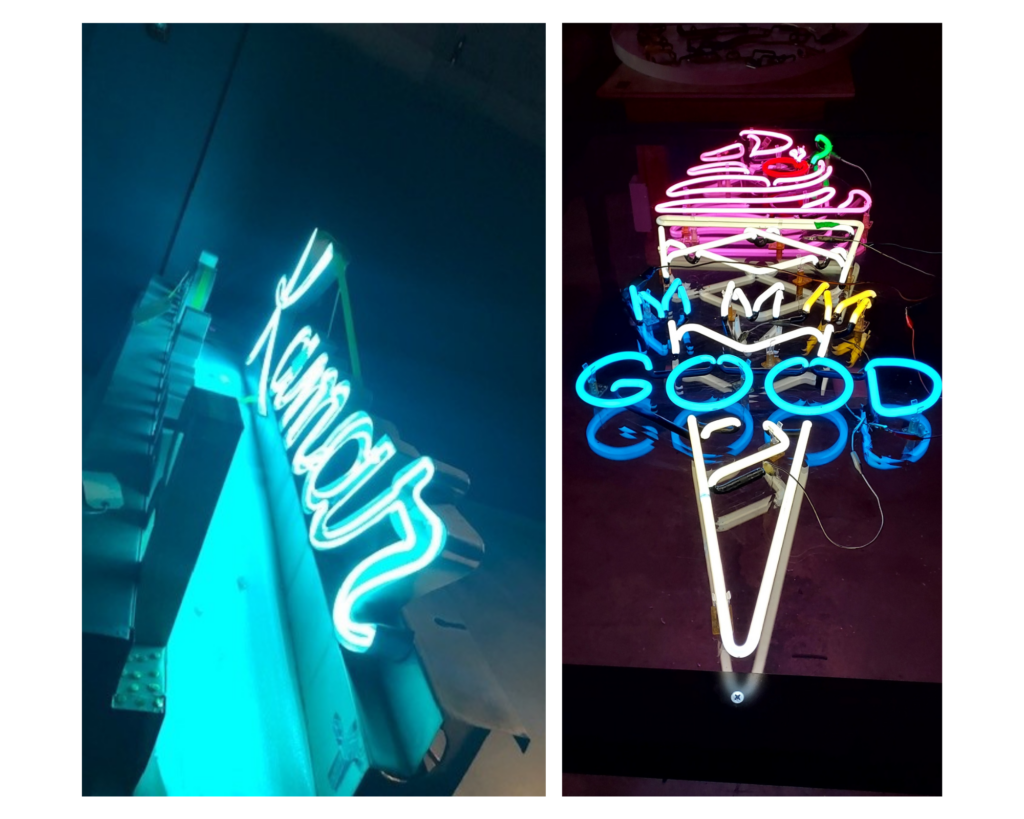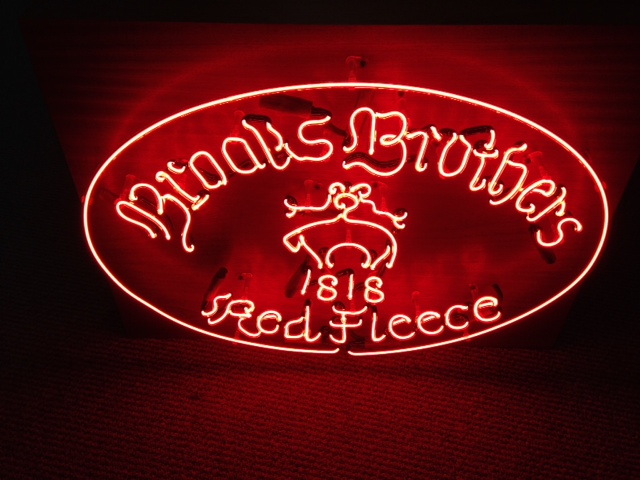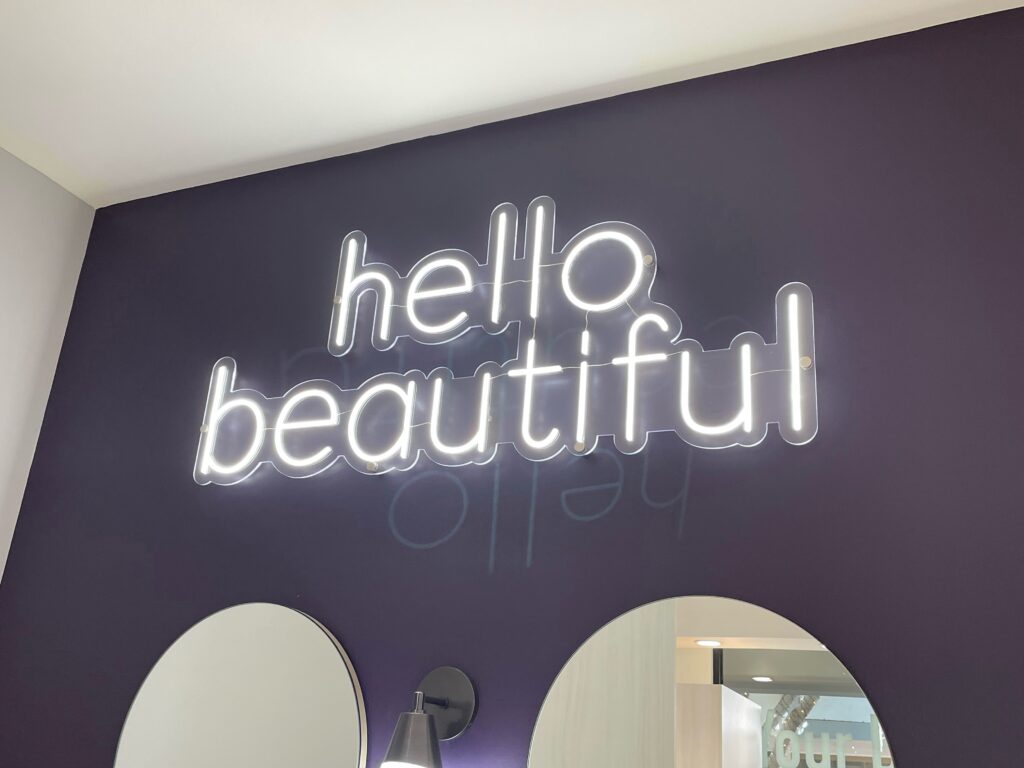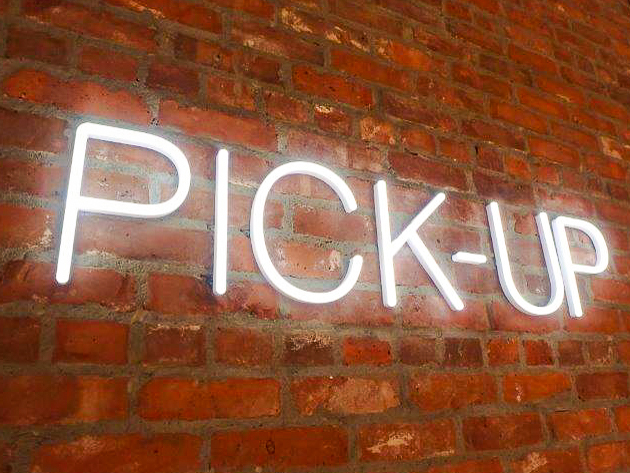Neon vs Faux Neon
Neon. Both futuristic and old school. Glamourous and bold. Trendy and vintage. It stands the test of time while creating a beautiful piece of art that can twist and bend the viewer to feel and react a certain way.

Real neon signs. Photo on the left showing a light, blue neon sign, maintenance for the Baltimore Museum of Industry. Photo on the right shows a neon sign in various colors shaped like an ice cream cone with the words “mmm good.”
It’s adaptable. It’s evocative. And mostly, it’s a dying art form. In part due to the issues with sustainability and in part due to cost, but one thing’s for certain is that no one wants to part with the aesthetic possibility’s neon offers.
While we are proud to have to ability to continue to craft authentic neon signs for those true, die-hard fans of the classic material, along with the know-how to refurbish old neon signs like we recently did for the Baltimore Museum of Industry and for an upcoming project for Baltimore’s Lexington Market, us and many sign makers are looking to more sustainable, cost-efficient alternatives.

Oval sign in red neon reading: “Brooks Brothers 1818 Fleece.”
But before we get into those alternatives, here’s a closer look at classic neon why you might choose traditional neon over alternatives:
Pros
Choosing neon over the new alternative can be a tough decision, but here are some pros to going with a traditional neon sign:
- True neon emits a warm glow, the light created relying on a chemical reaction between gases and an electrical current.
- Real neon also has a longer lifespan, with easy maintenance that generally revolves around refilling the gases needed for the chemical reaction or replacing the glass tubes that house the elements.
- It’s durable in that it won’t be damaged by power surges.
Cons
Even with those pros, there are drawbacks to using traditional neon. Here are the cons to consider before going with traditional neon:
- First, is that it’s less eco-friendly, and needs significantly more power to run than LED.
- It poses danger risks if the glass breaks, which will release noxious gases, and also can be hot to the touch.
- It doesn’t allow for the light to be altered in any way—meaning it can’t be dimmed or have color variations.
- Additionally, there are more and more restrictions on how neon is being manufactured, meaning if you start with neon now, you might have difficulty replacing it with another neon sign if major damages occur, though you’ll still likely have the option to keep up with maintenance for a long while!

Faux neon sign reading “Hello Beautiful” on a purple wall.
Alternatively, you have faux neon, the neon dupe, or in the industry known as LED neon. LED neon is generally made out of LED flex, which is essentially a bendable rope of LED lights that can be arranged in a way to mimic the effect of shaped neon glass tubing.
Pros
The benefits of LED neon, or faux neon, are certainly tempting as an option if you want that classic vintage, or new trendy look for your brand. Here’s a look at why you might choose faux neon:
- It’s more energy efficient than traditional neon with lower running costs if you opt for a large display.
- A safer choice since it doesn’t give off heat with no potentially harmful gases involved in running the lights.
- Has a brighter, more consistent light that helps the sign be seen from farther away.
- You can dim, flash or change the color as you like.
- More durable than the glass tubes of traditional neon, and rather long lasting, designed to run 5-10 years before necessary maintenance or replacement.
- Simpler to fit and wire, with more ability to replicate brand logos exactly.
Cons
On the other hand, there are downsides to faux neon, too:
- Some find them less appealing to look at and can be a bit harsher to look at if the LED is not properly diffused.
- Maintenance can be costly if the acrylic house must be replaced, or the LEDs themselves need repair or replacements.
- Can be damaged by power spikes if proper surge protection isn’t in place.
Either way, you’re going to get a sign that stands the test of time, that elicits an array of feelings from totally trendy to vivacious and vintage.

Faux neon sign in white reading “pick-up”
Want a neon or faux neon sign for your business? Don’t know which to choose? We can make your neon dreams come true.